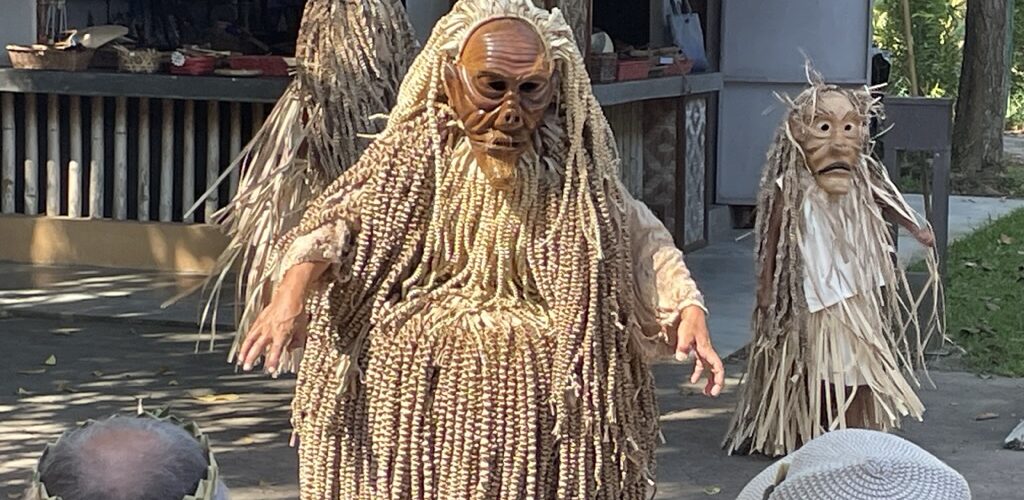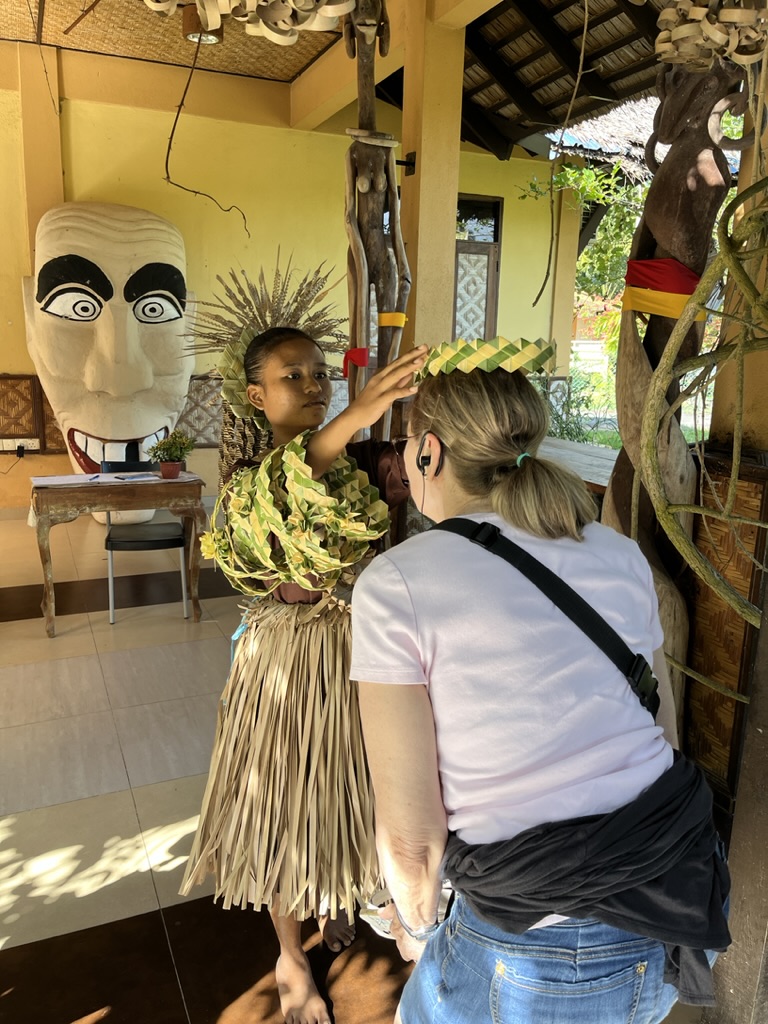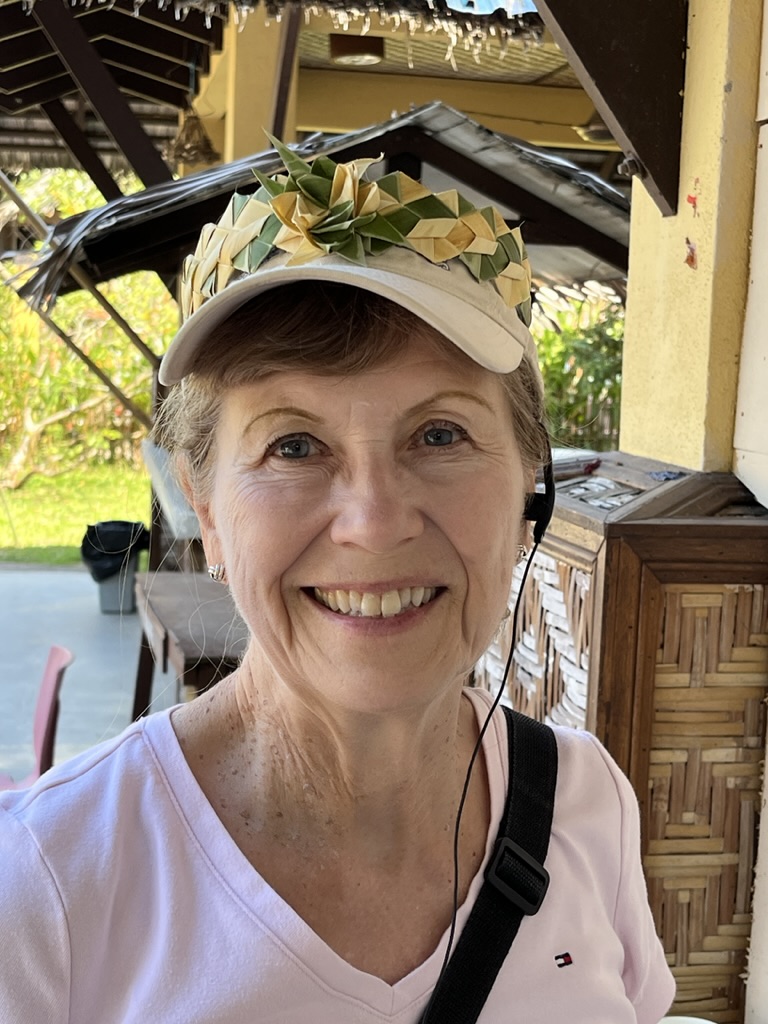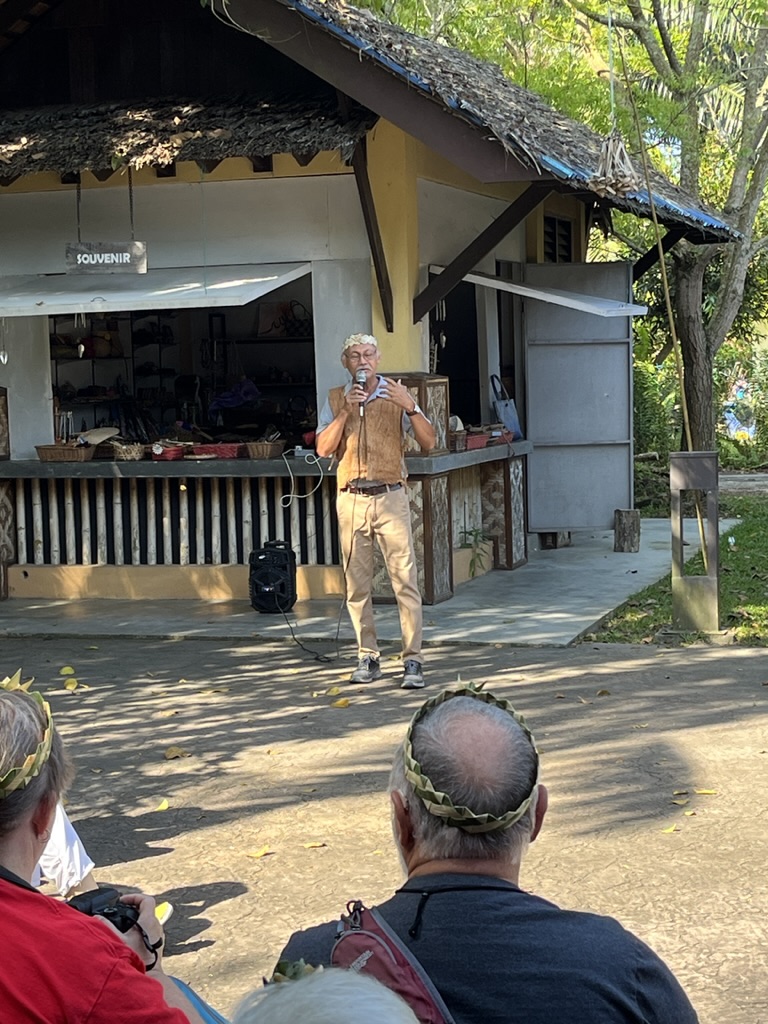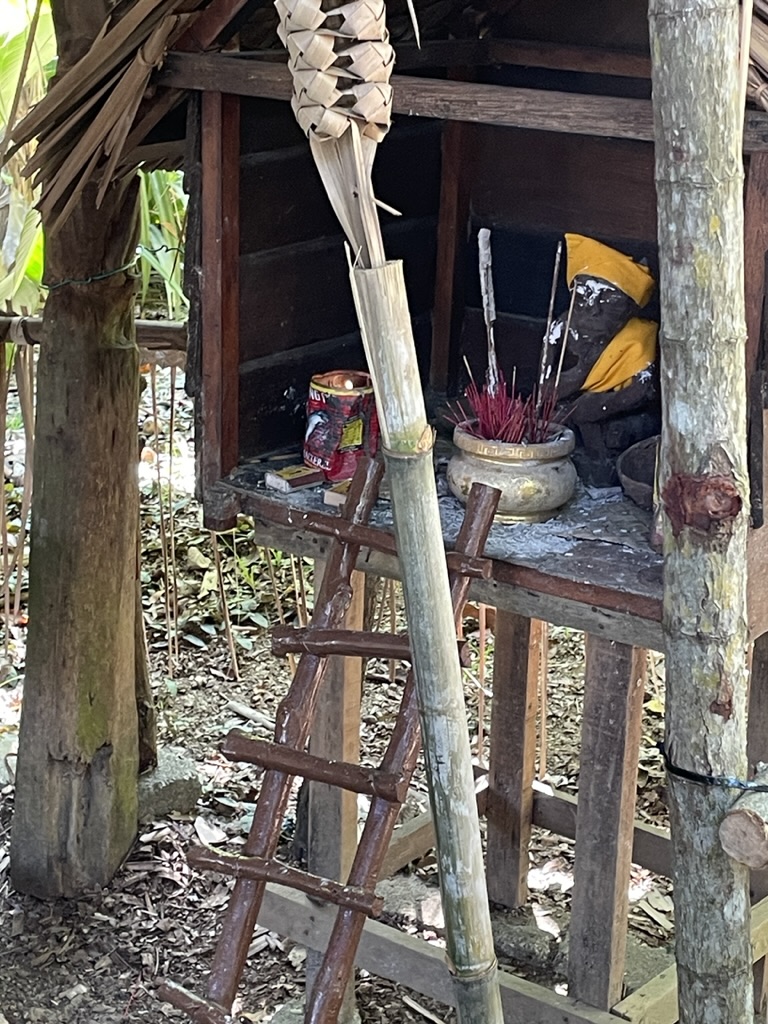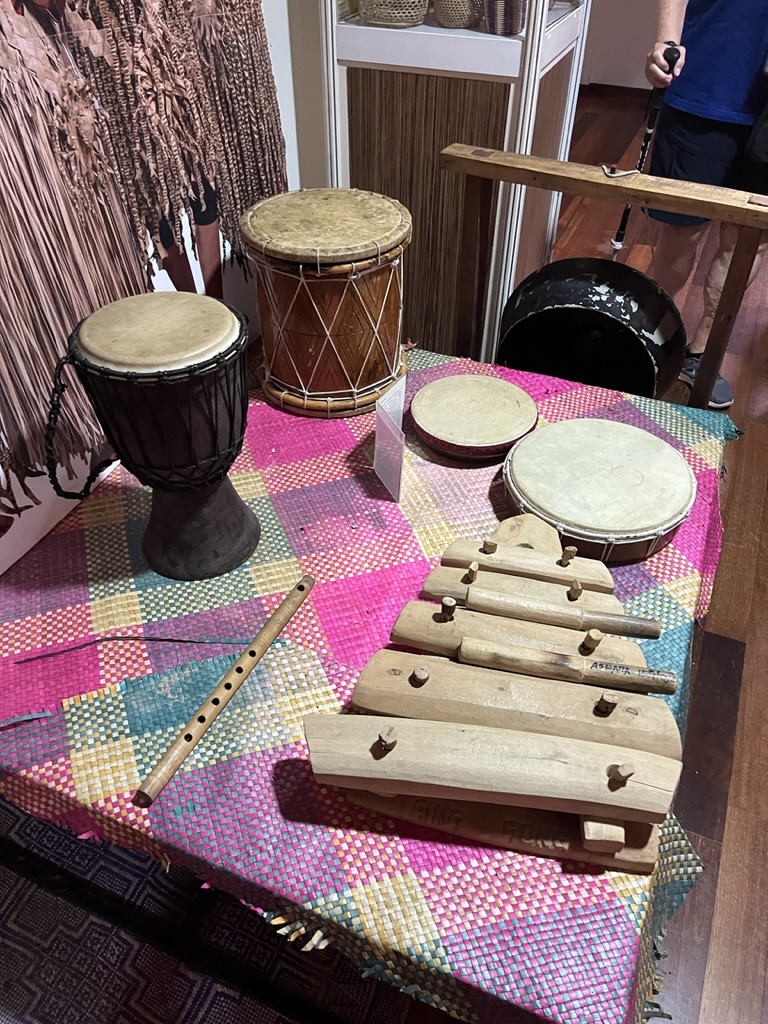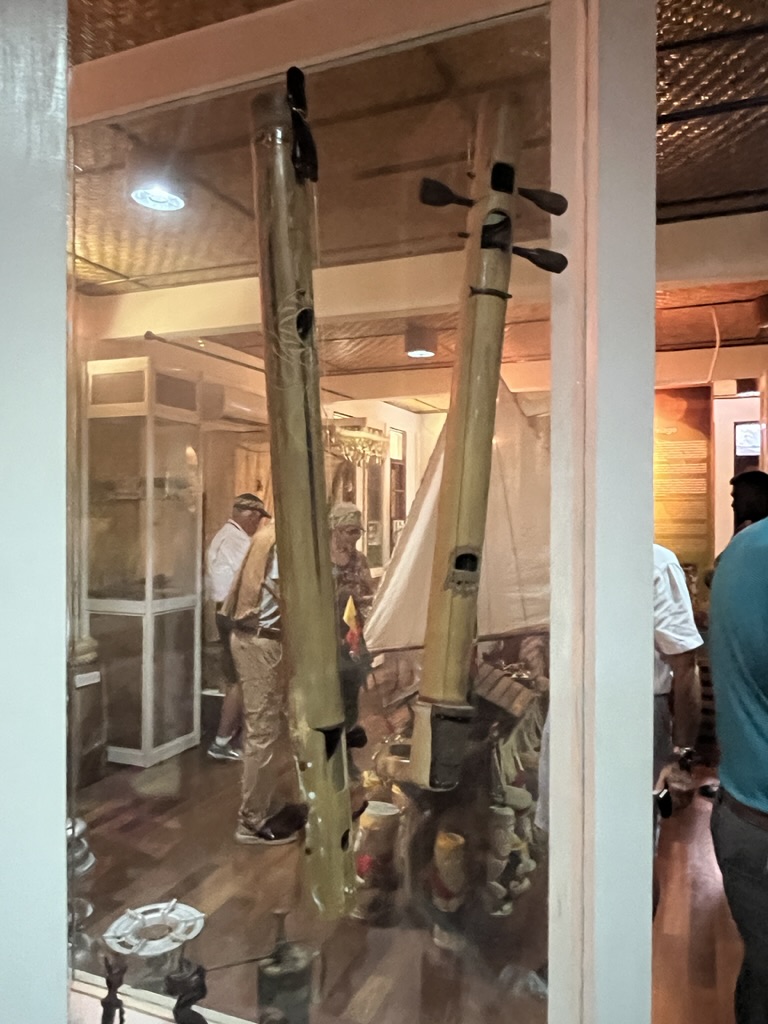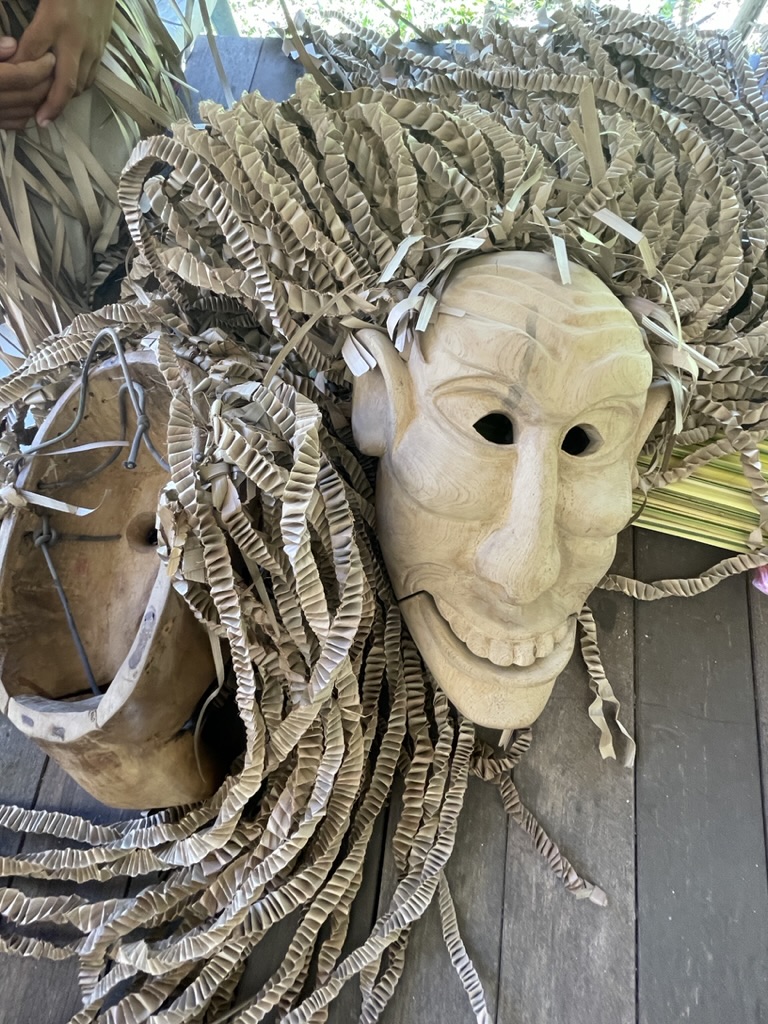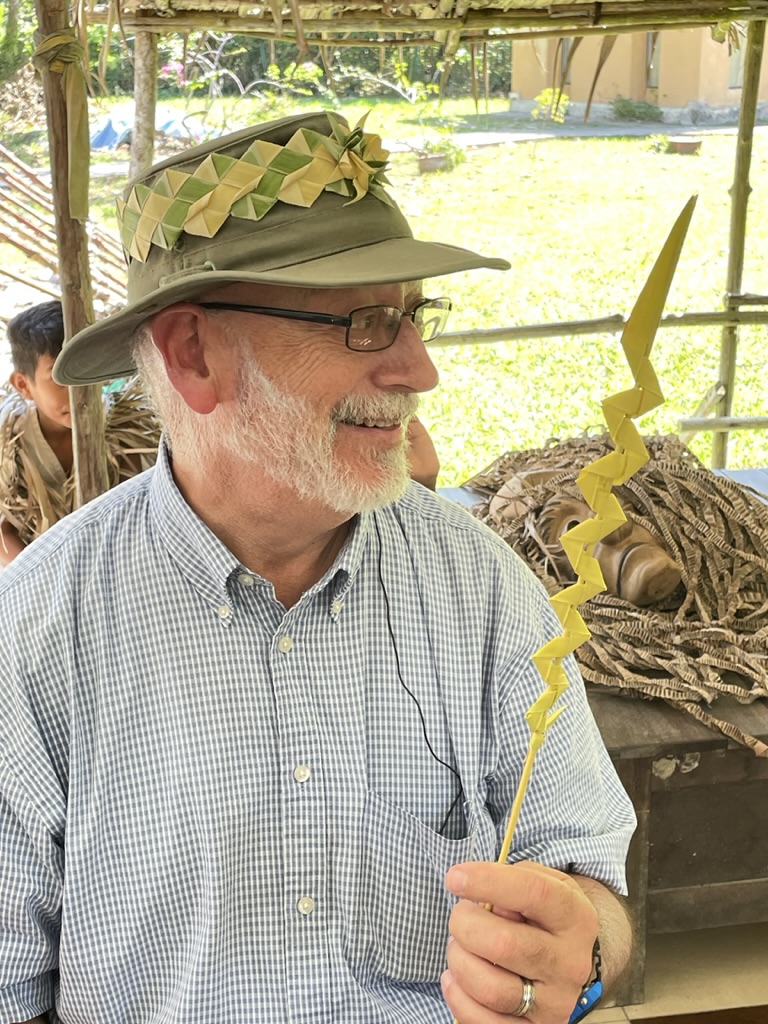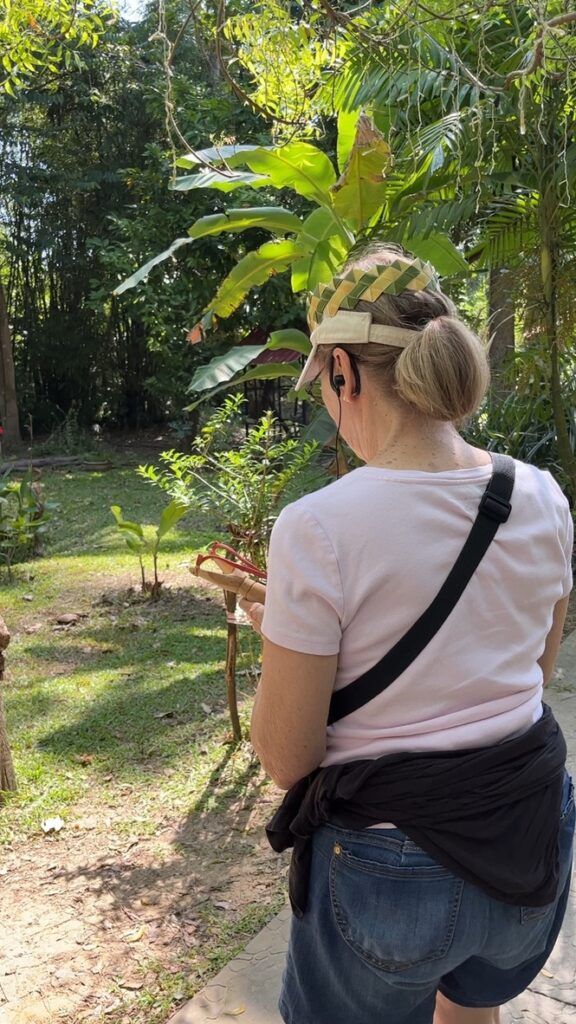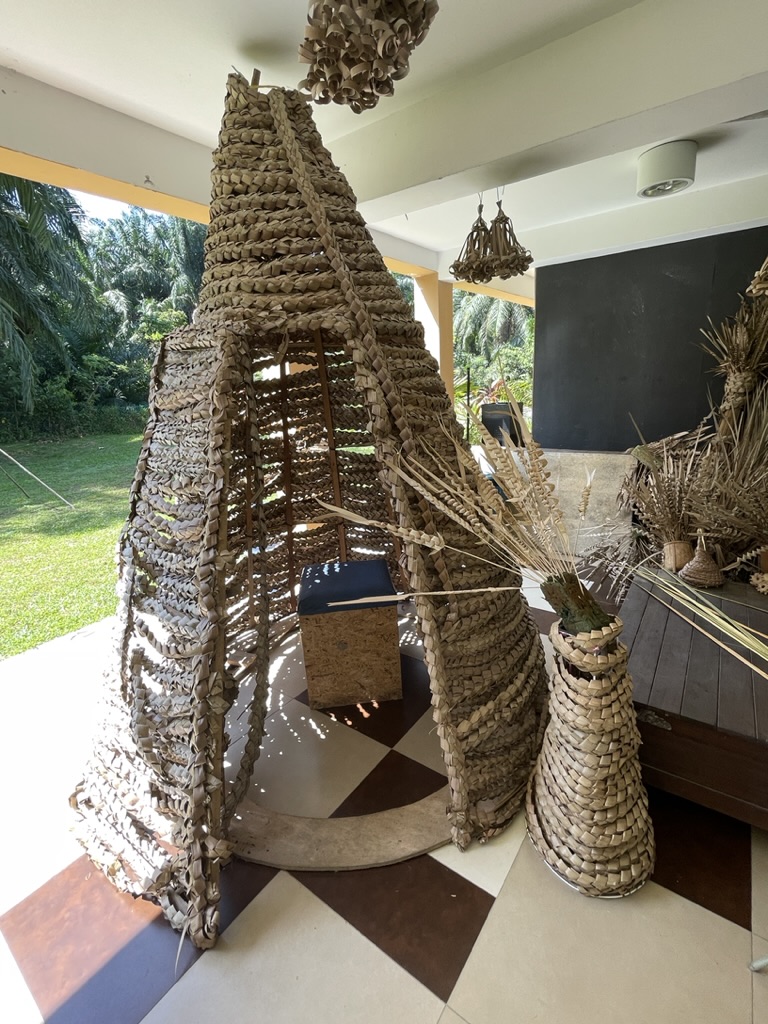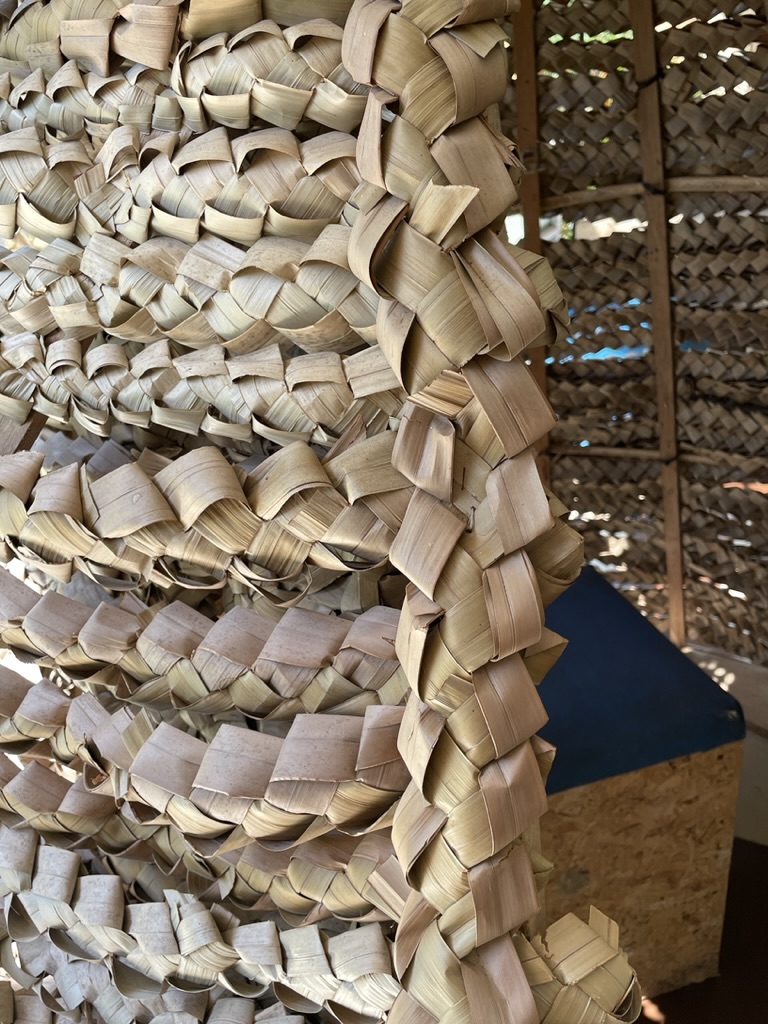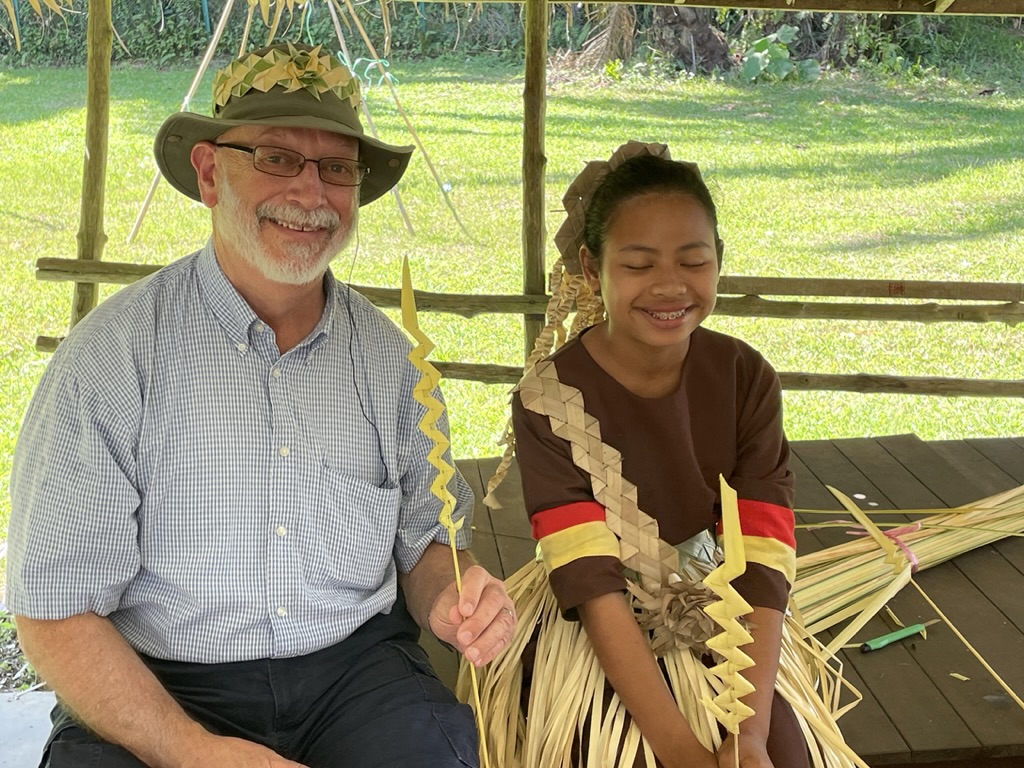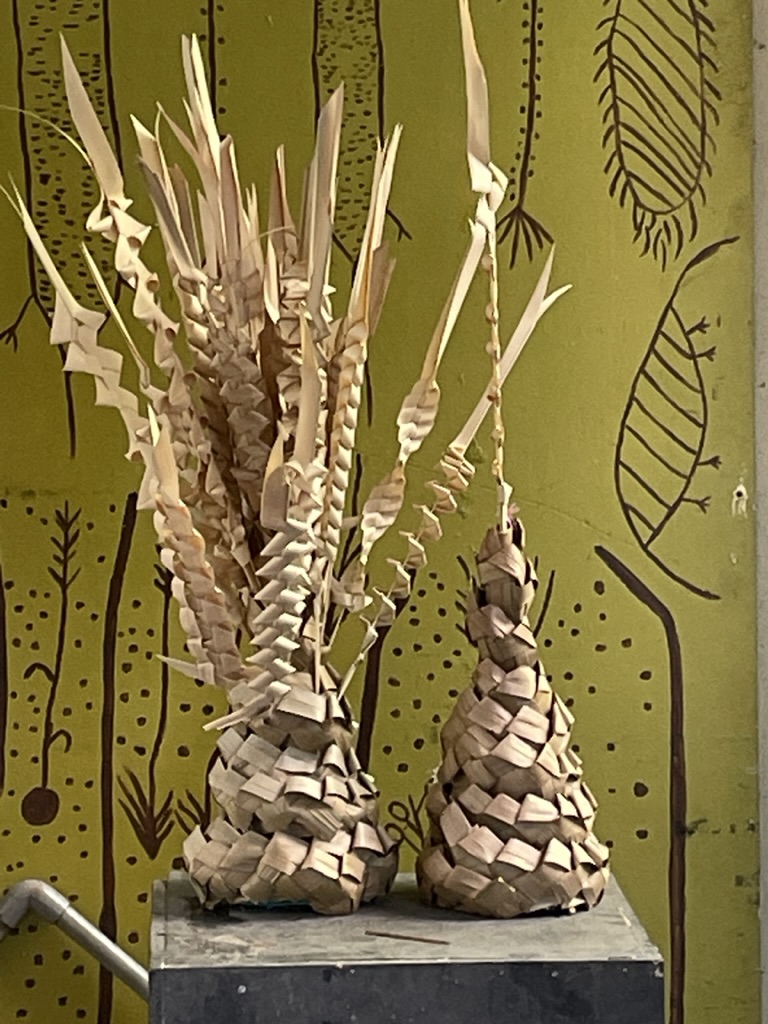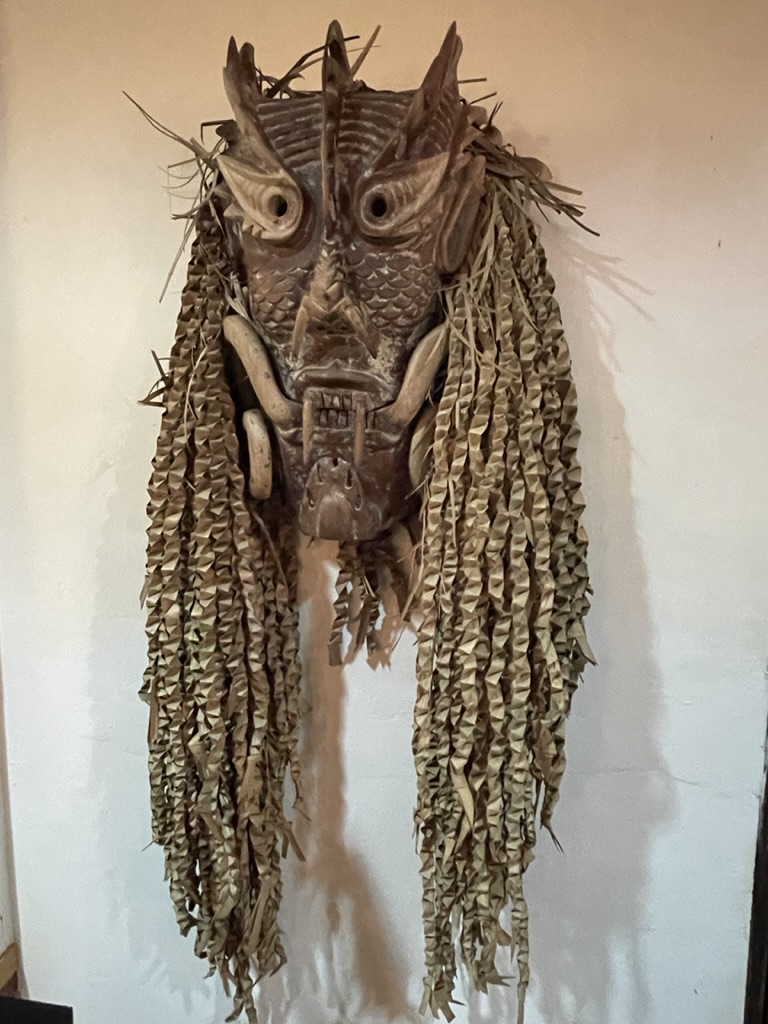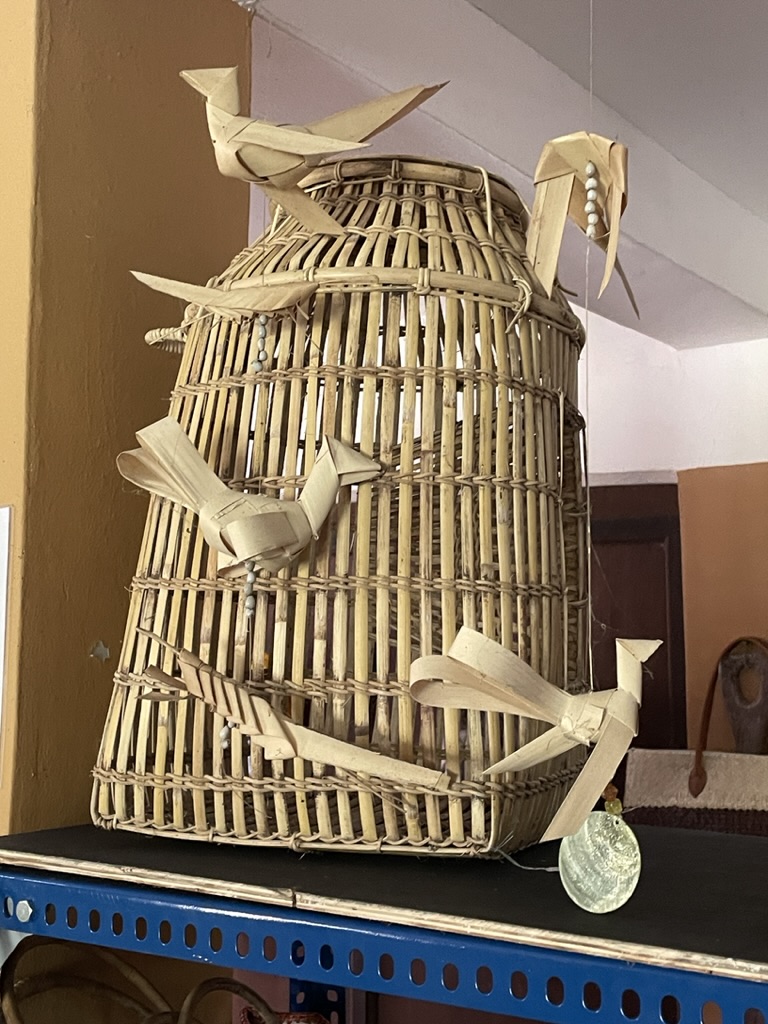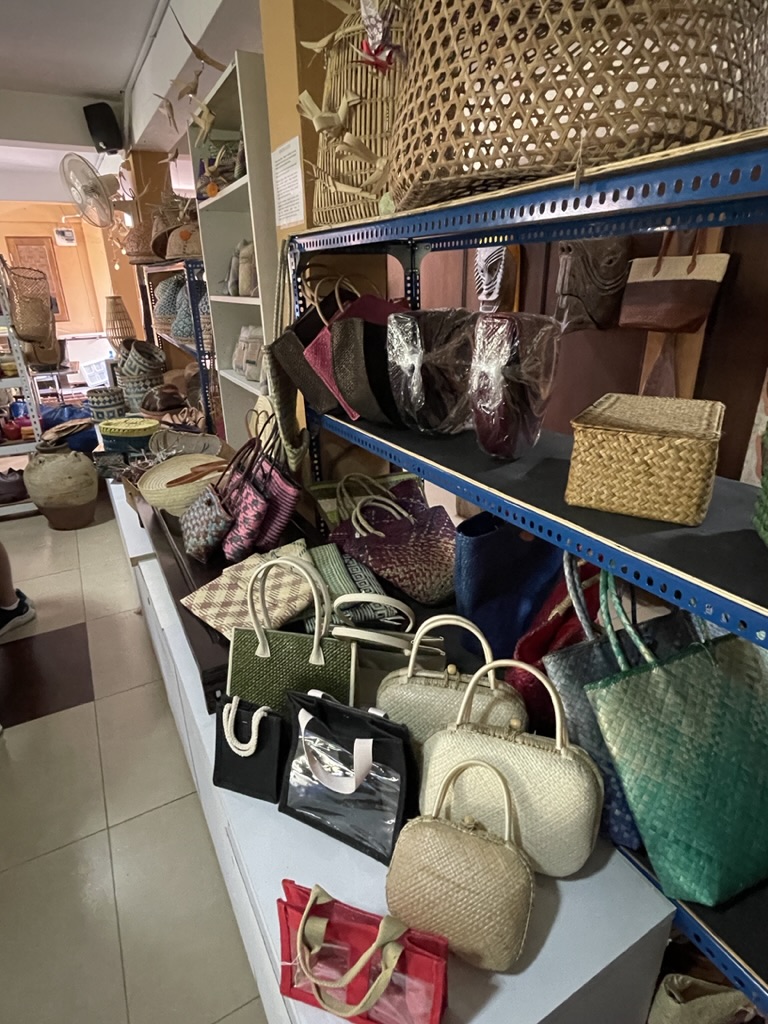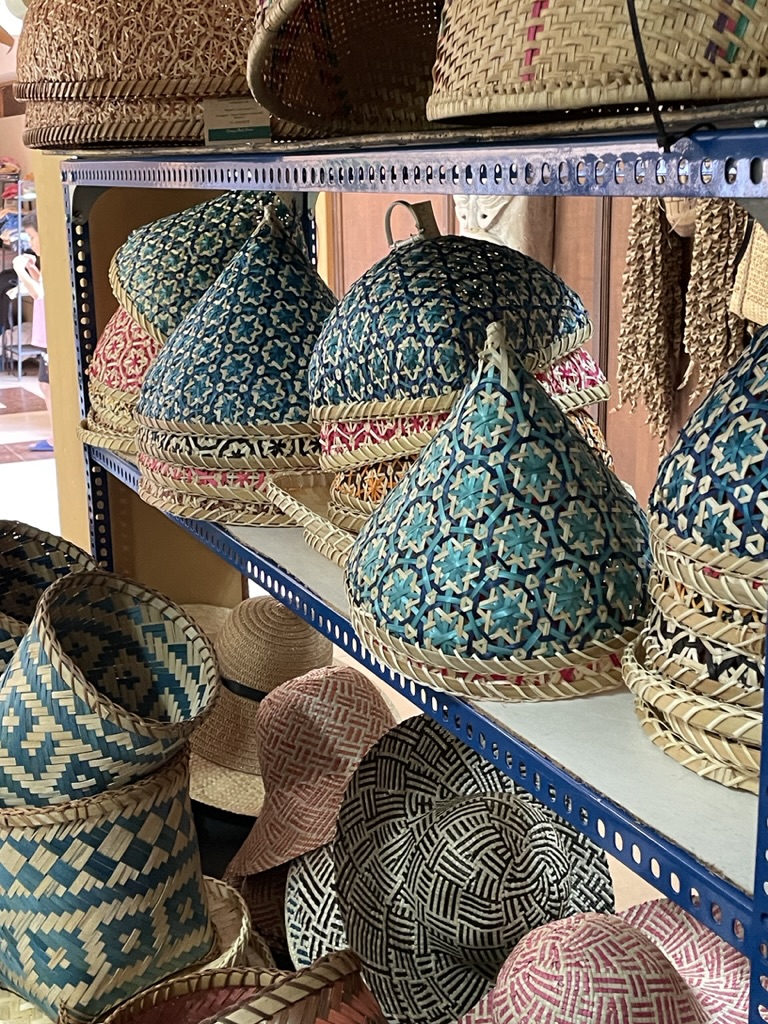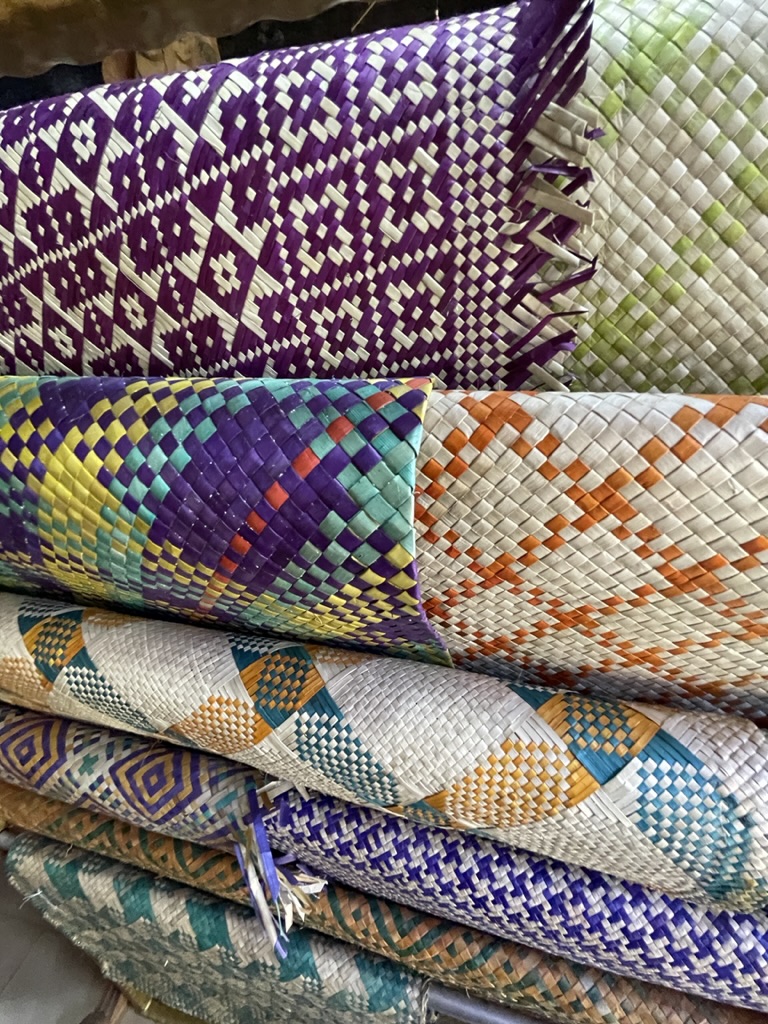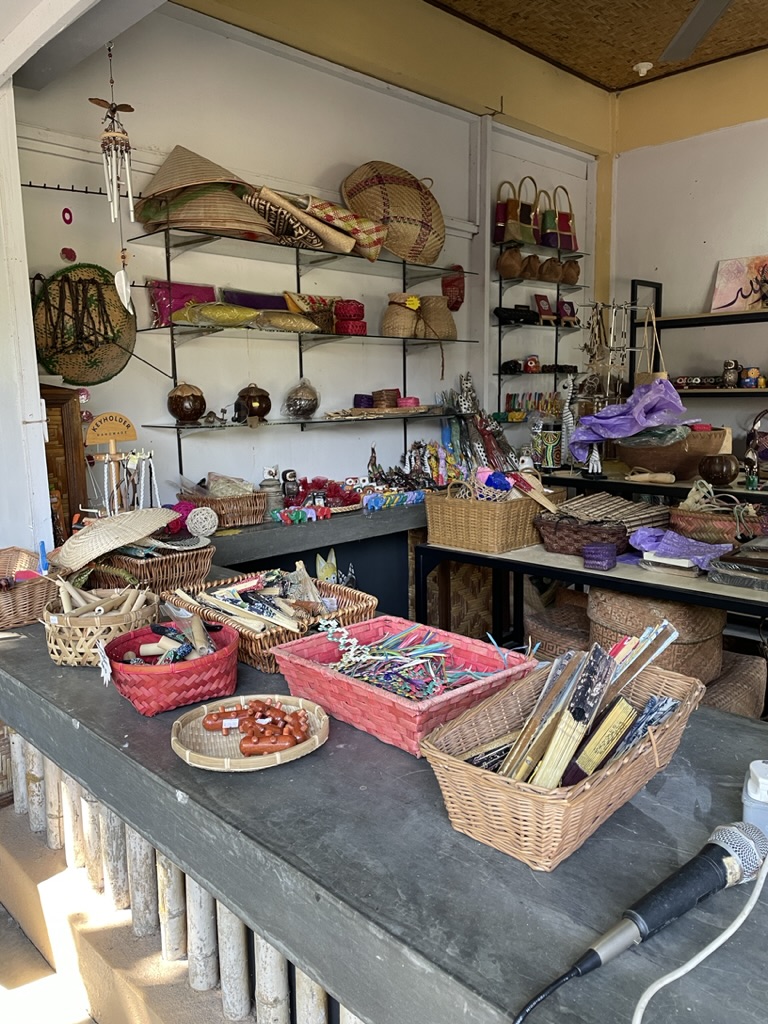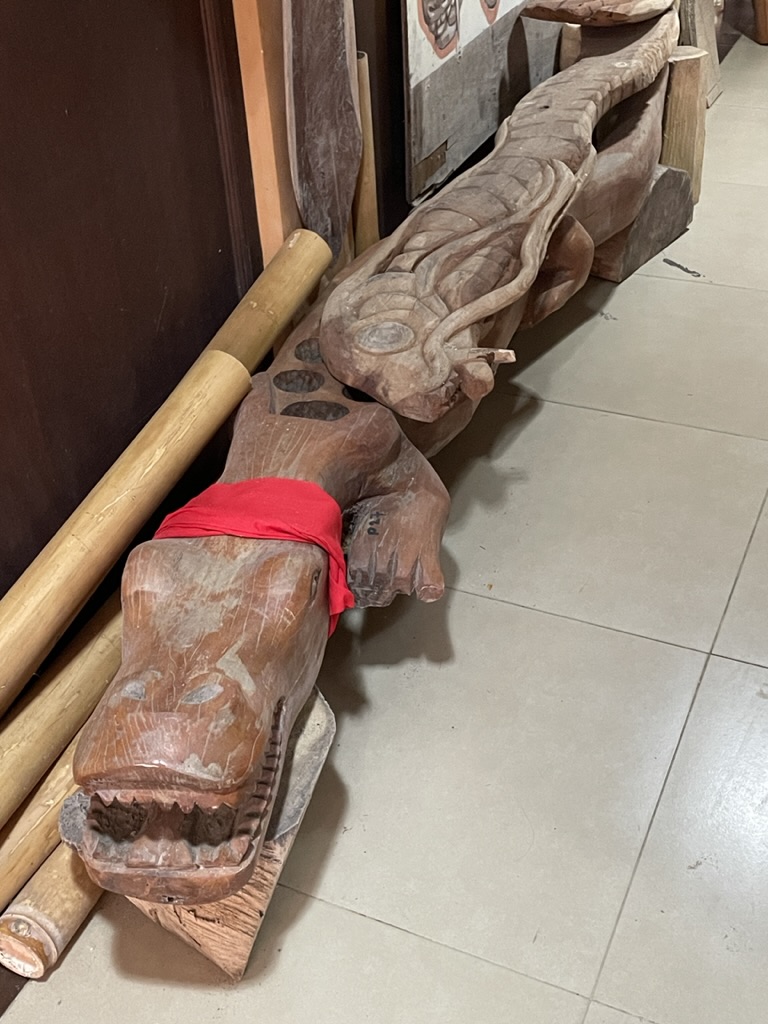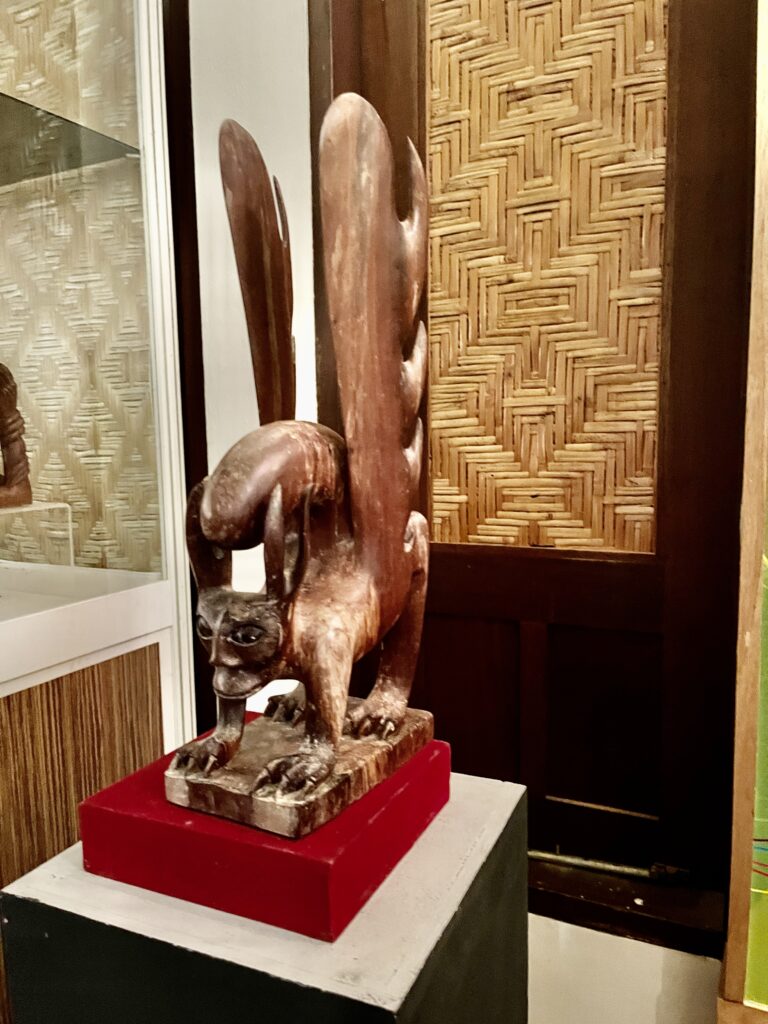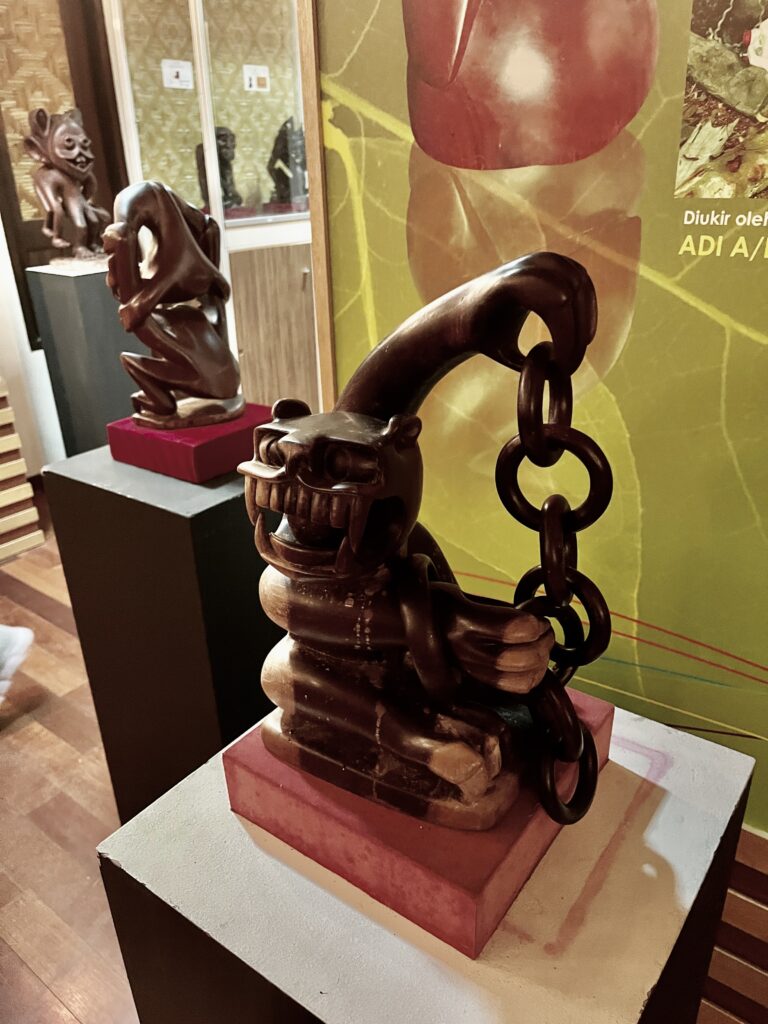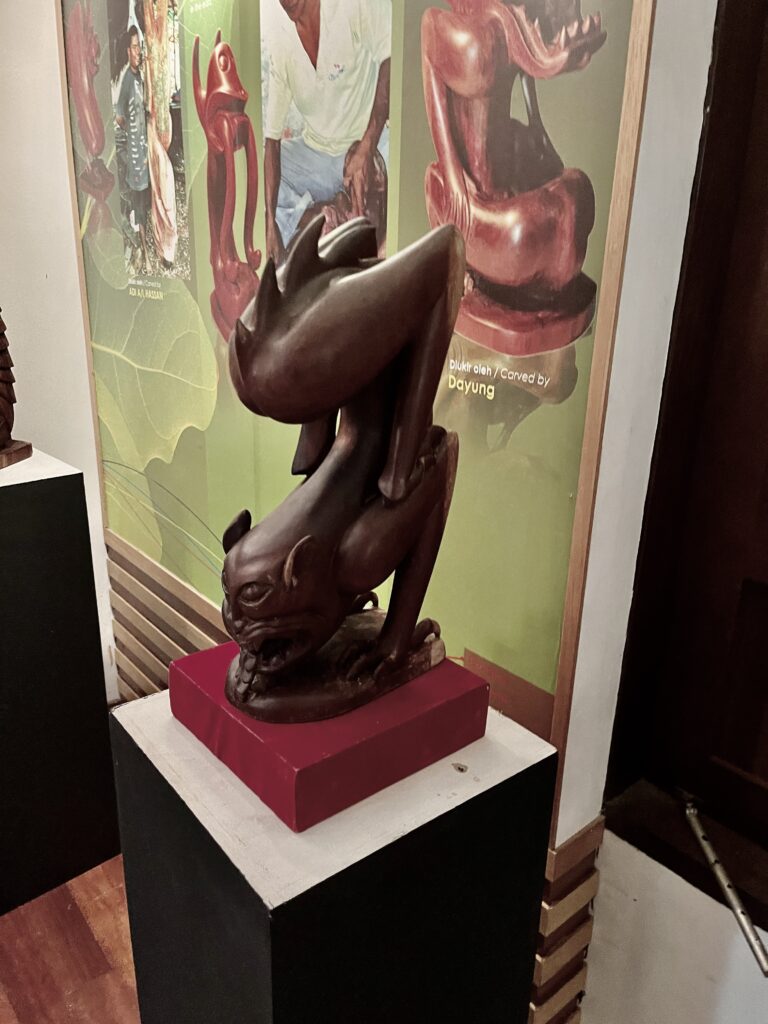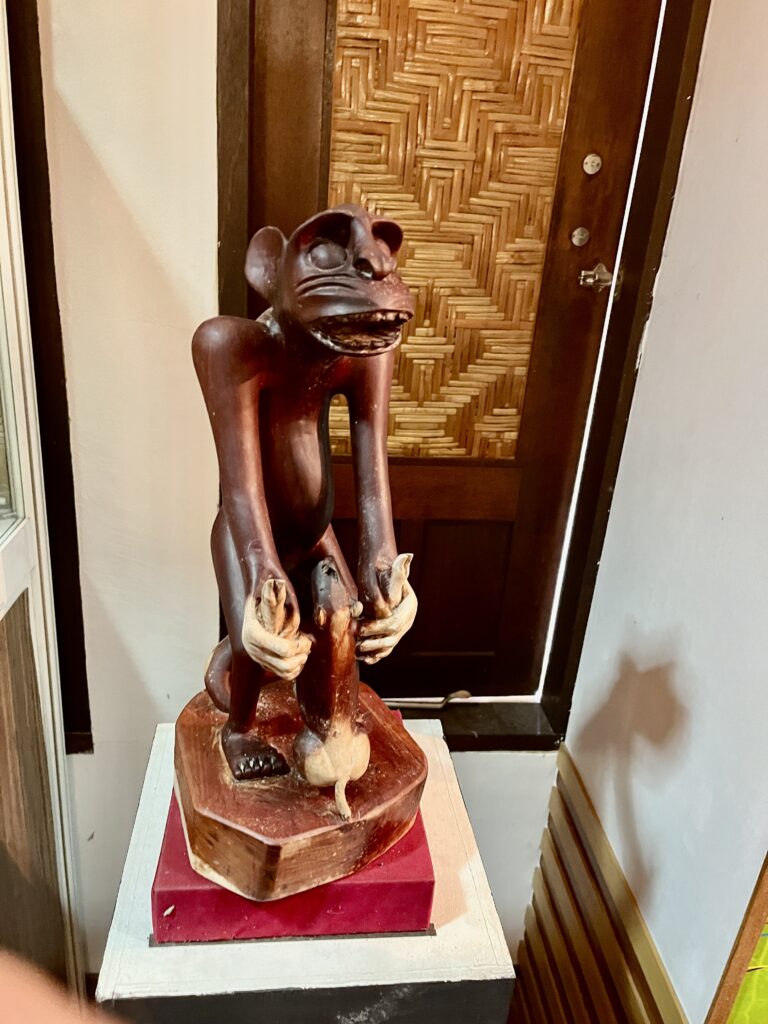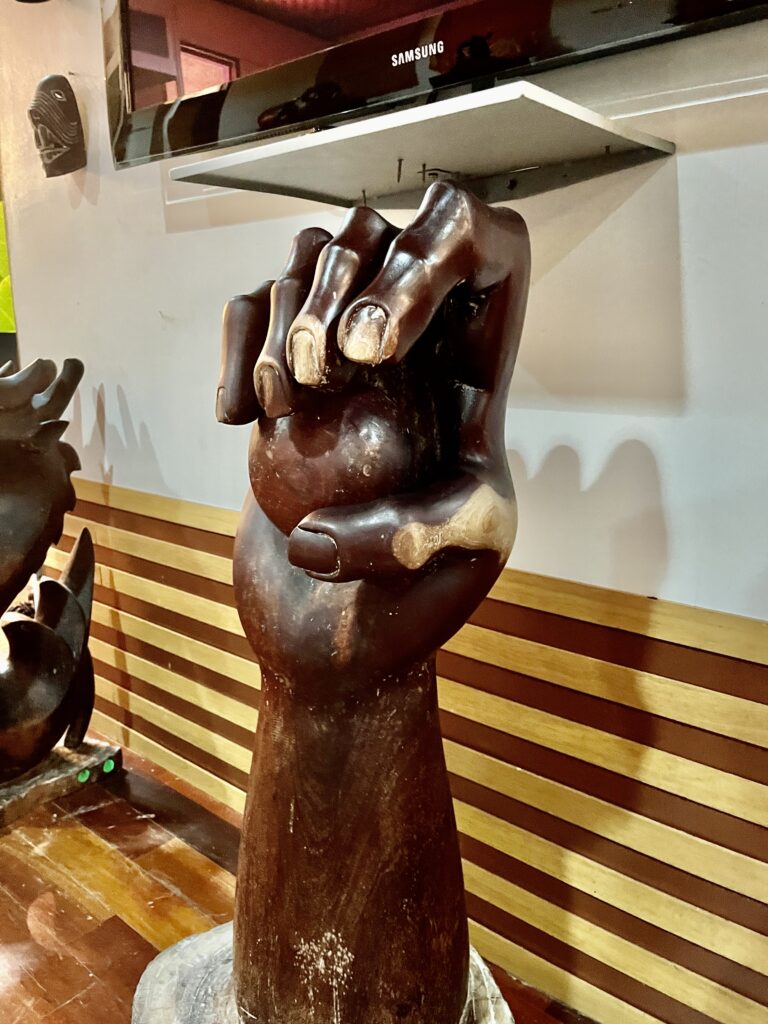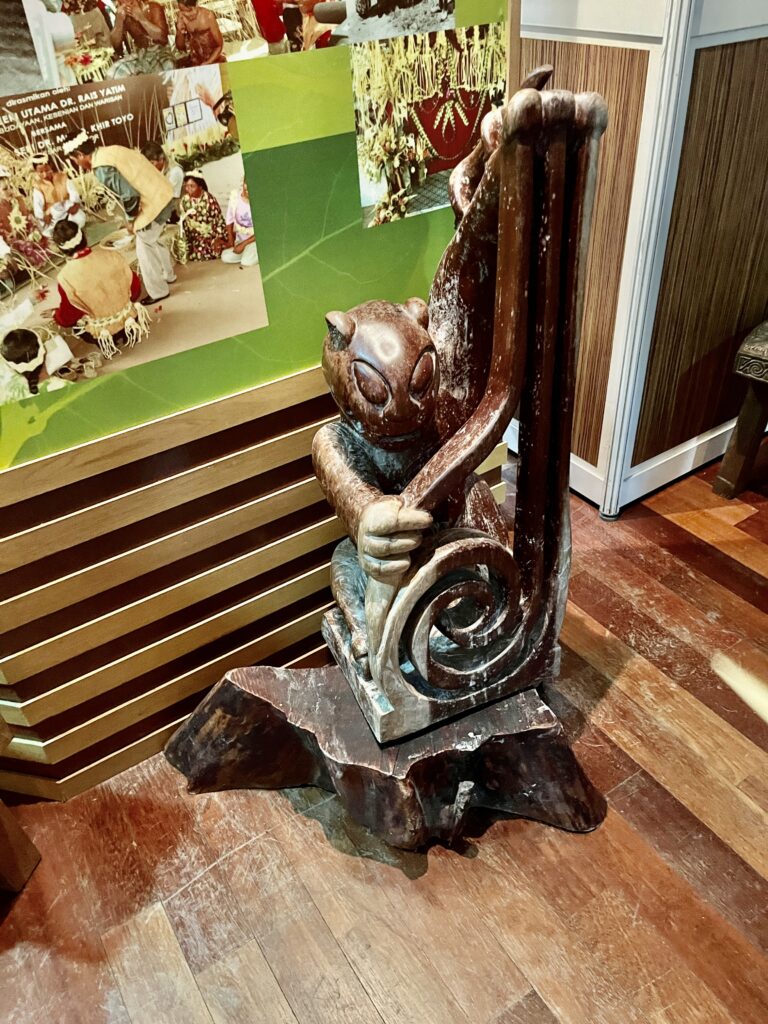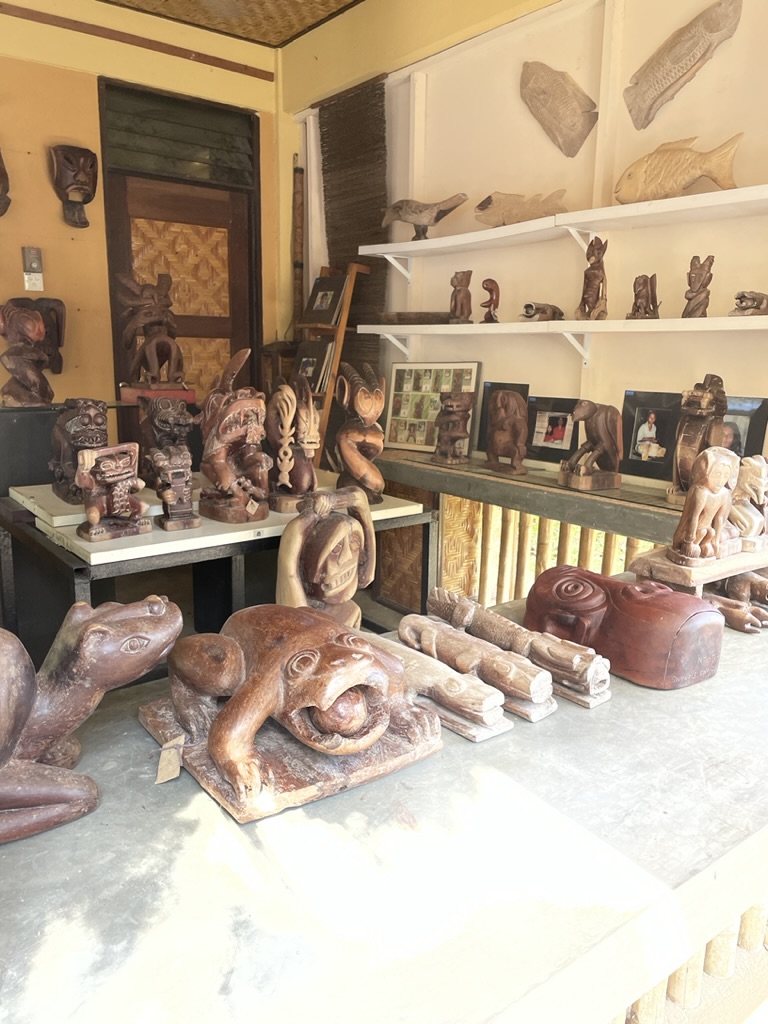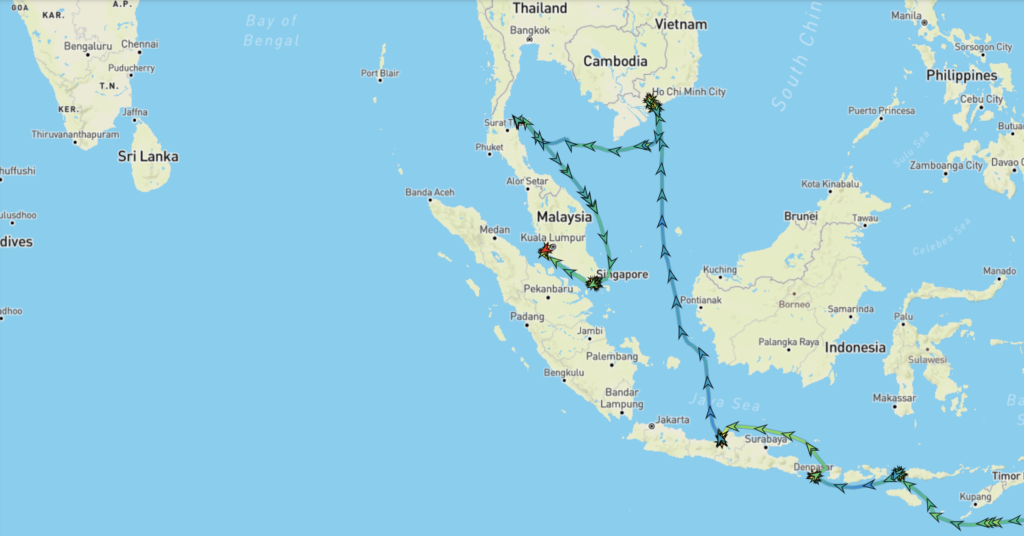
Up and at ’em and ready to explore!
8:45 saw us at the Star Theatre waiting for our group to be called for our trip to the Mah Meri Cultural Village (the free “included” tours are usually just busing people around the city to look at the different architecture of the different cultural buildings – we prefer to get out of the cities).
Along the way we saw acres and acres of Oil Palms (which have filled a lot of the niches that killing whales for their oil occupied). The early British colonists originally planted rubber trees (for all the new fangled car tires) – however after synthetic rubber was invented the rubber trees were no longer profitable so they tore them all out and planted Oil Palms. You can find Palm Oil in “Kit Kat” bars, Nutella, and others.
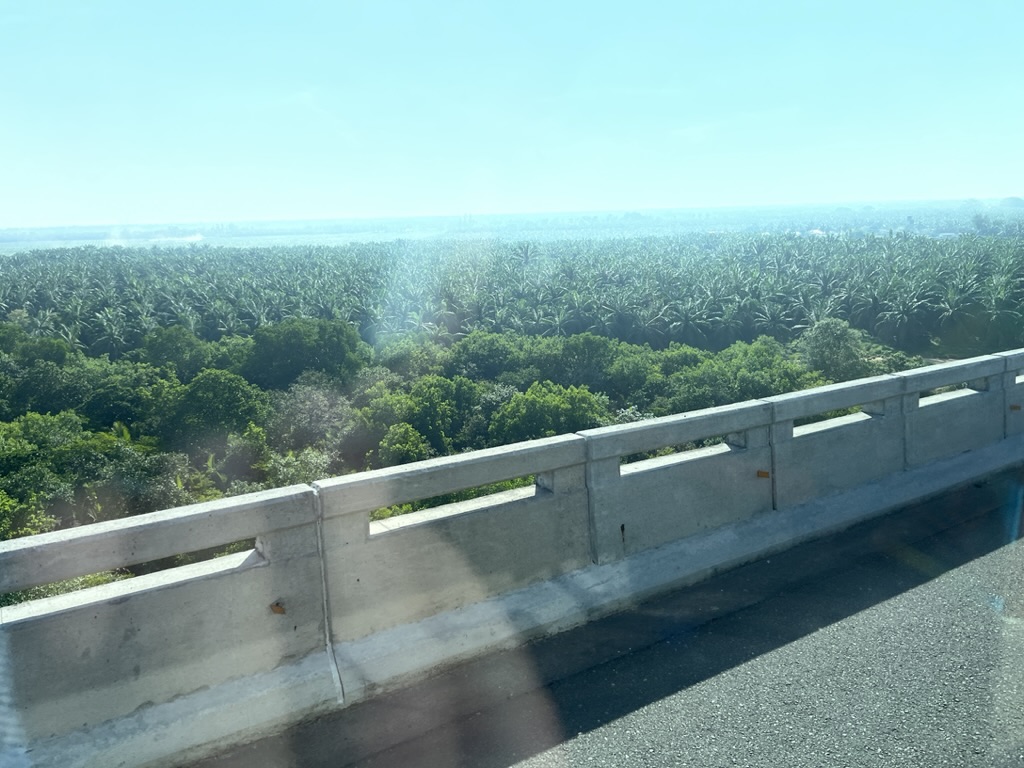
Arriving at the Cultural Village where we were greeted with a crowning ceremony…
…and ceremony that involved stepping on a mat, having water sprinkled on our feet, and a creamy substance painted on the back of our hands.
Stepping into the central plaza we saw (and participated in) several demonstrations of local culture:
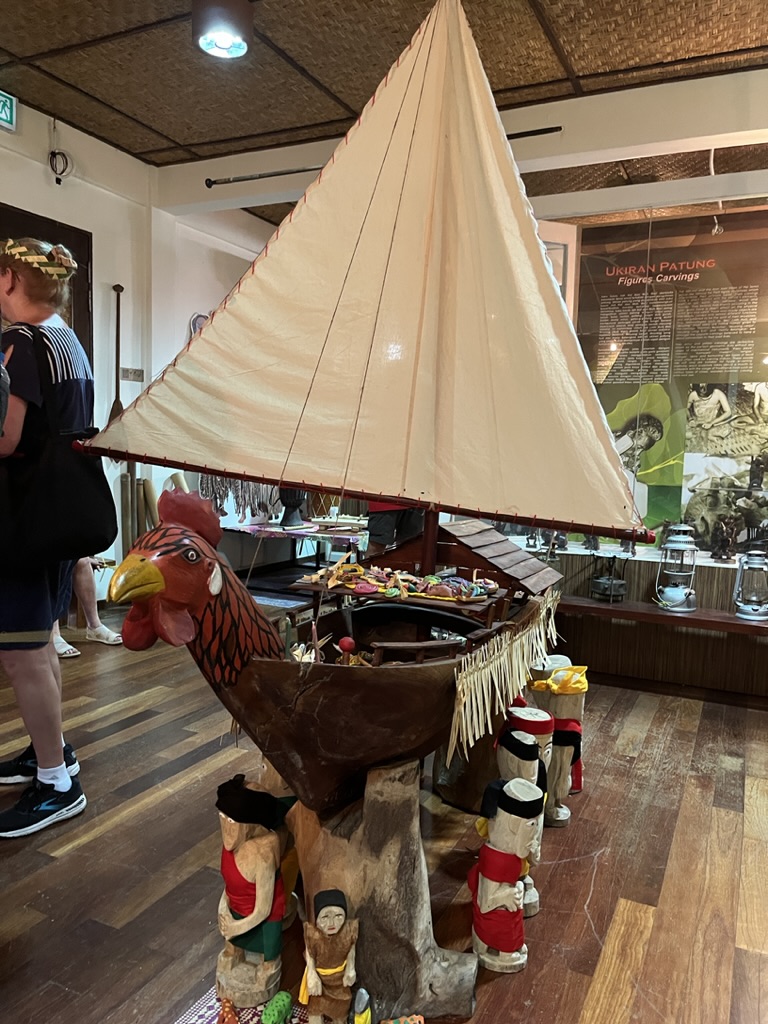
- When people get sick, the shaman builds a small boat and make images of various food and other daily necessities as an homage to the bad spirits who are responsible for the illness. The “sampan” is placed next to the sick person and the Shaman “moves” the sickness onto the sampan, which is then caste away onto the sea. Their boat for all the people sick with Covid was very large.
These people are masters at weaving with Pandanus Palm leaves – everything from simple origami shapes to the finest woven baskets. Here are a few examples of their art.
They are also expert wood carvers.
After trying some activities and crafts it was time for the wedding.
They put on a mock wedding (using cruise passengers as bride, groom, mother-in-law, officiant). The volunteers all were dressed in tree bark tunics with an overskirt of origami string skirts and tops. (The rather rotund “officiant” took in a deep breath to speak-and his skirt fell off-much to everyone’s laughter (as he still had his short on underneath. The wedding party was paraded into the central building for the ceremony with the parents each standing behind the bride and groom. The officiant asked the bride and groom several questions to test their preparedness for raising a family – such as “Have you been married before?” (if any of the answers don’t match, then the mothers-in-law raise an eyebrow and compensation has to be arranged). The final question is “are their any other women that would want to marry you” and all the women gather together in the center wrapped in a huge cloth so only one of their hands stick up and out – the men follow the “mask shaman” around the cloth 7 times and the groom is supposed to be able to pick out his bride. If the bride does NOT want to marry the groom, she just keeps her hand down so she won’t be chosen!
Once they were pronounced wed, it was time to dance.
And take photos
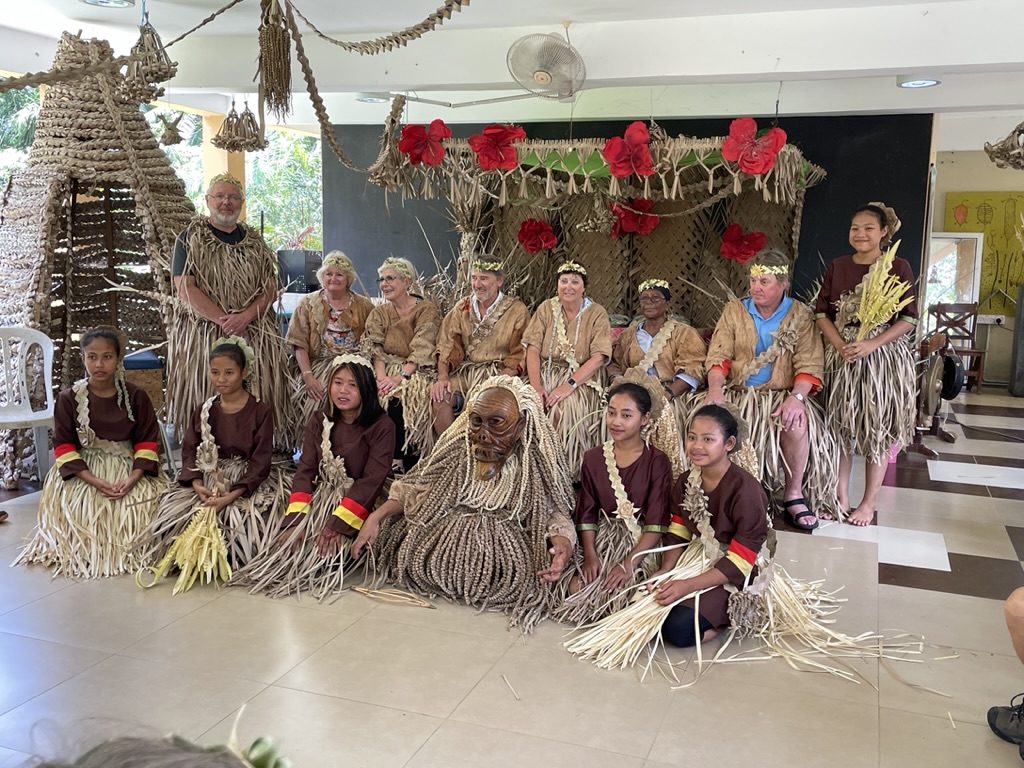
And, of course, there was the wedding feast.
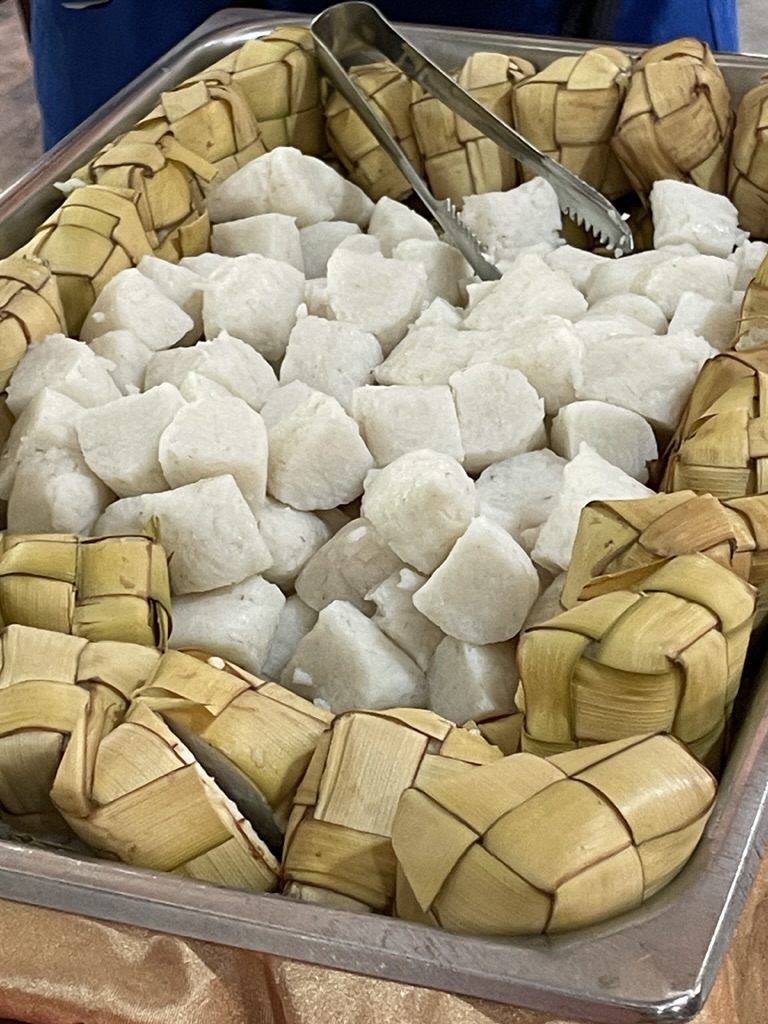
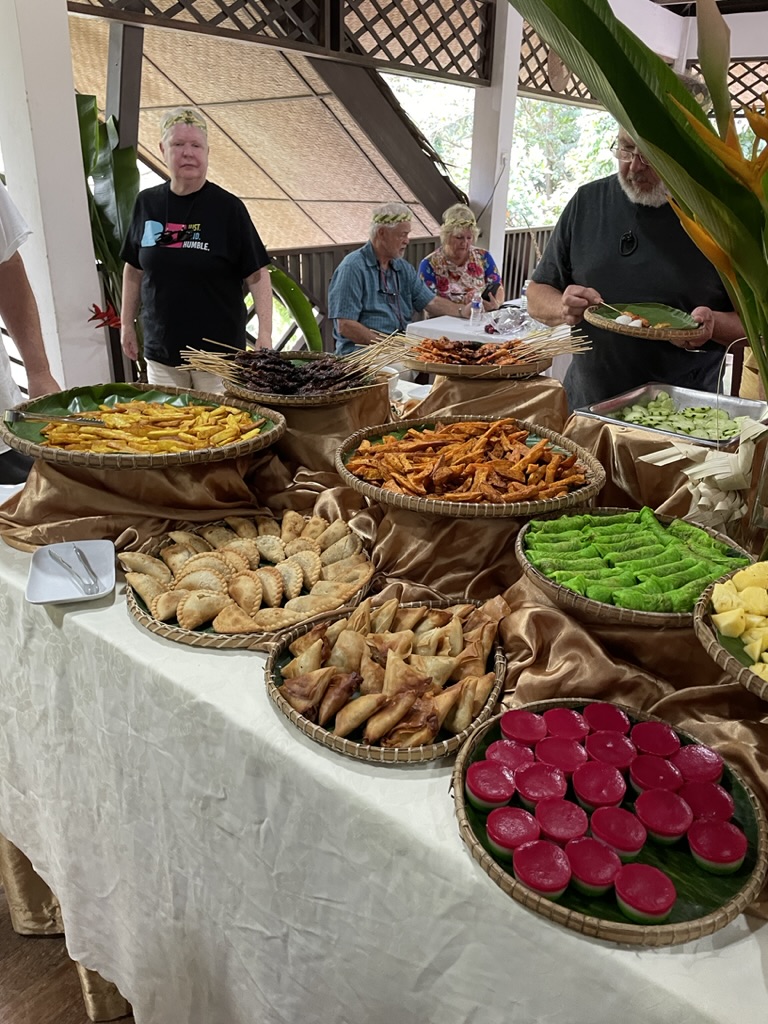
Sadly, all good things must end, so it was back on the bus and back to the ship for (you guessed it) reading (Cheryl) and a nap (Randy).
I slept thru the Port Talk on George Town, so we’ll have to see that on our TV later.
We did, however, make it to the 6:30 lecture on Fascinating Facts About Animal Adaptations – several adaptations were surprising. However adaptations take a lot of time and the Polar Bears are running out of time.
BBB saw us still struggling with 12/27.
So that’s Kuala Lumpur.
Tomorrow is Langkawi.
The good times just keep rollin’ along!
Nite all, R
Cheryl’s Factoids about indigenes villages:
- Malaysia is full of indigenes villages from different racial, cultural, and religious groups (most worship nature spirits) that the nation is trying to integrate. A DNA study revealed the darker skinned people in the north with fuzzy hair are definitely from one of the Africa migrations while the lighter skinned people with straight hair have an Austral-Polynesian heritage. Researchers expected the people who settle in the middle of Malaysia to be a mixture of these two groups however their DNA comes from somewhere NORTH of China!
- The Mah Meri villagers we visited pretty much keep to themselves but have been taught about the wider world, have tin roofs (under all that pandanus thatching), have a toilet area with western toilets and running water in the sinks, have electricity for fans and cooking, and all the children go to a primary school in their own village. AND they can run a credit card to pay for items you are buying from them – which is hard to find even in the cities!
